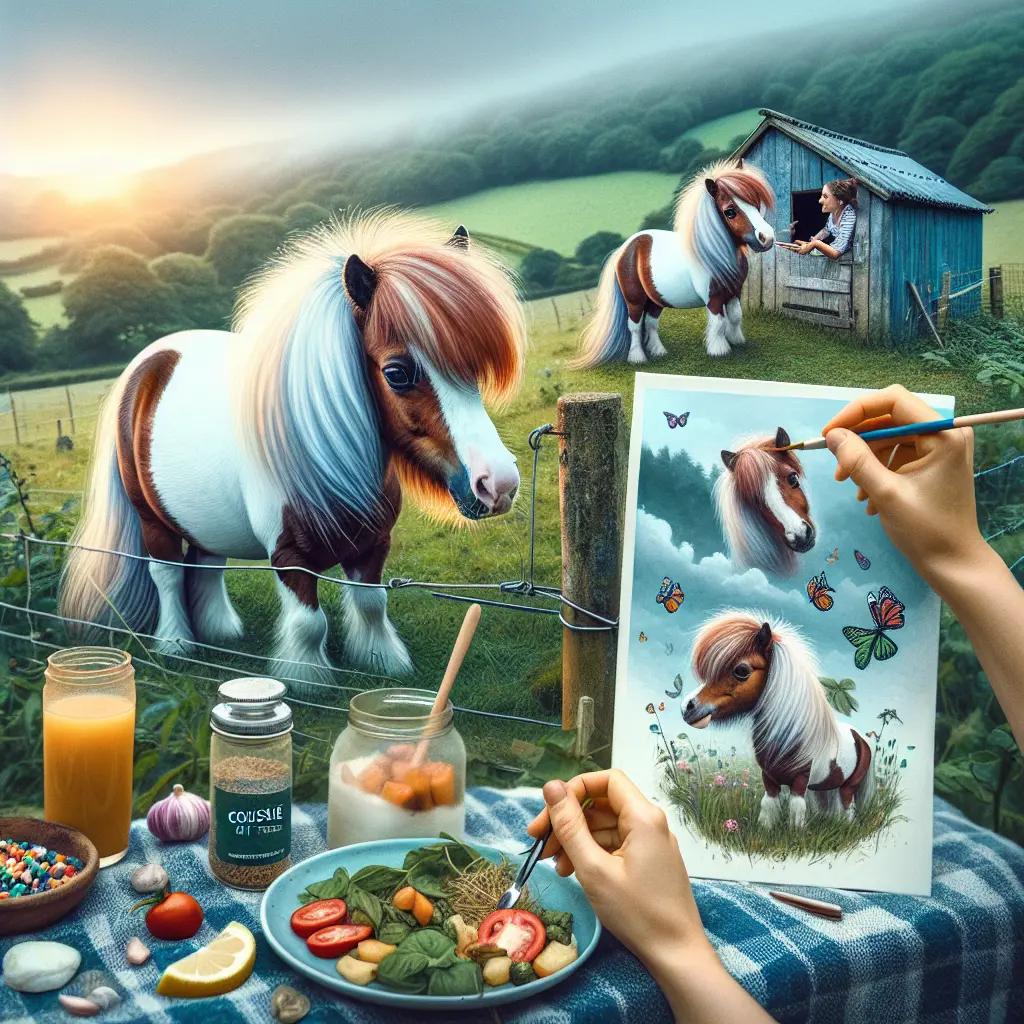Exploring the Adventures and Charm of Mini Shetland Ponies: A Day in the Life of Cousin It
With their adorable appearance and endearing personalities, Shetland ponies have captured the hearts of many equine enthusiasts around the world. These miniature marvels are renowned for their hardiness, intelligence, and playful disposition, making them an excellent choice as pets or mounts for children. In this blog, we'll delve into the charming world of Shetland ponies, particularly focusing on the adventures of a "Mini Shetland Pony" named Cousin It.
Introduction to Shetland Ponies
Shetland ponies originated from the Shetland Isles, located off Scotland’s north-east coast, where they have thrived for over 2,000 years. Their history dates back to the Bronze Age, with archaeological findings showing that ponies were present on the islands during that time.

Characteristics of Shetland Ponies
Physical Traits
- Height: Shetland ponies typically stand between 28 and 42 inches tall, making them an ideal mount for small children.
- Strength: Despite their size, these ponies are incredibly strong and can pull twice their weight, demonstrating their remarkable power and versatility.
- Coat: They come in a variety of colors, including bay, chestnut, gray, and pinto, but spotted patterns are rare. Their thick double coats help them survive the harsh winters on the Shetland Isles.
Temperament
- Intelligence and Personality: Shetland ponies are known for their intelligence, friendliness, and bold personalities, which can sometimes make them cheeky and challenging to train.
- Loyalty: They are loyal companions and are often used as pets or working ponies due to their adaptability and affectionate nature.
Adventures of Cousin It
Let's imagine Cousin It as a spirited Mini Shetland Pony with a coat colored in a vibrant pinto pattern. Cousin It loves going on adventures across the rolling hills of the countryside, exploring hidden paths and enjoying the company of friends.
Morning Routine
Cousin It starts the day by grazing in a lush green meadow, savoring the fresh air and dewy grass. After breakfast, Cousin It gets ready for the day's activities, whether that's a leisurely ride with a young rider or a fun-filled session of harness driving.

Playtime and Training
Given their intelligence and playful nature, Shetland ponies like Cousin It enjoy engaging in various activities. They might participate in the Shetland Pony Grand National series, racing over small steeplechase jumps, or they could be training to pull a carriage, a task they excel at due to their strength and agility. Cousin It is particularly fond of jumping obstacles and running freely in an open field.
Evening Routine
As the sun sets, Cousin It returns to its cozy stable, eager for dinner and some well-deserved rest. The evening is spent socializing with other horses or simply relaxing, enjoying the peaceful surroundings of the stables.

Health and Care of Shetland Ponies
While Shetland ponies are generally hardy and long-lived, they do face some health challenges. Key issues include:
- Laminitis: A common condition in ponies, particularly if their diet isn't managed properly, leading to hoof inflammation.
- Hyperlipidemia and PPID (Equine Cushing’s Disease): Metabolic conditions that require careful dietary management and veterinary monitoring.
To ensure the health and happiness of a Shetland pony like Cousin It, providing regular veterinary check-ups, quality feed, and plenty of fresh water is essential. Additionally, regular grooming and hoof care are crucial for maintaining their overall well-being.

Conclusion
The charm of Mini Shetland Ponies lies not just in their diminutive size or endearing looks but in their remarkable strength, intelligence, and versatility. Whether as a pet, a mount for children, or a companion animal, Shetland ponies like Cousin It bring joy and adventure to countless people around the world.
For those considering bringing a Shetland pony into their life, understanding their needs and characteristics is key to creating a fulfilling relationship. With the right care and attention, these small but mighty companions can thrive and become cherished family members.
Please find additional information and resources about Shetland ponies below, with links to authoritative sources for further reading:
- Horse & Hound: The Shetland Pony
- Mad Barn: Shetland Pony Breed Guide
- The Scots Magazine: Five Fascinating Facts – Shetland Pony
Horse Riding Boot Collection
Horse Riding Gloves Collection
Horse Riding Socks Collection
Horse Treats And Gifts
Everyday Horse Vitamins & Supplements
Stable Rugs
Turnout Rugs
Horse Fly Protection


